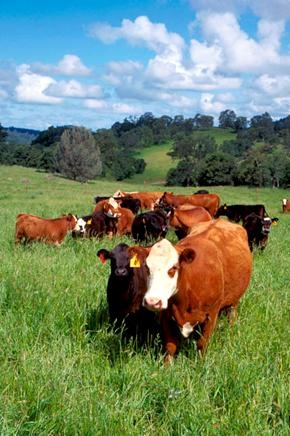
The USDA’s Market News Service reports on four classes of cull cows, which are divided primarily on fatness. The highest conditioned cull cows are reported as "Breakers.” These are quite fleshy and generally have excellent dressing percentages. Body condition score 7 and above is required to be "Breakers.” Note: If you don’t know about Body Condition Scoring (BCS) in cattle check out the following web site for good definitions and pictures of the various BCS’s: http://www.ag.ndsu.edu/pubs/ansci/beef/as1026w.htm.
The next class is a more moderate conditioned group of cows called "Boners" or "Boning Utility.” These cows usually fall in the body condition score grades of 5-7. Many well-nourished commercial beef cows would be graded "Boners.”
The last two grades are the "Leans" and "Lights.” These cows are very thin (body condition scores 1-4). In general, these are expected to be lower in dressing percentage than fleshier cows and more easily bruised in transport than cows in better body condition. "Lights" are thin cows that are very small and would have very low hot carcass weights.
Leans and Lights are nearly always lower in price per pound than are the Boners and the Breakers. "Lights" often bring the lowest price per pound because the amount of saleable product is small, even though the overhead costs of slaughtering and processing are about the same as larger, fleshier cows. Also, thin cows are more susceptible to bruising while in transit to market and to the harvest plant. Therefore, more trim loss is likely to occur with thin cull cows than with those in better body condition.
From a producer standpoint, when selling cull cows, it is generally more profitable to feed the Leans and Lights up to get to Boners. It is generally not economical for a producer to feed a cull cow up to the Breakers class as the price differential between them and Boners is usually small.
To make it more confusing you’ll also see the prices reported for cull cows based on their USDA carcass grade or their expected carcass grade. The most common grades, in order of the least amount of marbling to the greatest amount of marbling are: Canner, Cutter, Utility, and Commercial. Younger aged cows (30 months or less) may also reach the Standard, Select or Choice grade.
Full mouth and broken mouth are relative terms for cull cows that describe the age of the animal. Check out the following web page on aging cattle from their teeth to see some photos: http://www.fsis.usda.gov/OFO/TSC/bse_information.htm. Another age term, which you might encounter, is smooth mouth. Sometimes, you’ll see reports that only use abbreviations like FM = full mouth; SM = smooth mouth; and BM=broken mouth.
Other terms are used when Calvy or pregnant cows are marketed and the most common seen is Close-up. Close-up means the cows are 21 days or less prepartum (before calving). You might also see Far-off which means 60 to 21 days prepartum. Interestingly, these terms come from the dairy industry and are used for grouping cows on the dairy. These prepartum terms are often used to describe heifers too.
References Used and for Further Reading:
Marketing Cull Cows How and When?
http://beef.unl.edu/beefreports/symp-1995-19-XIV.shtml
United States Standard for Grades of Slaughter Cattle
http://www.ams.usda.gov/AMSv1.0/getfile?dDocName=STELDEV3062519
Know USDA Cull Cow Grades Before Marketing Culls
http://beefmagazine.com/cowcalfweekly/1030-know-usda-cull-cow-grades-market/